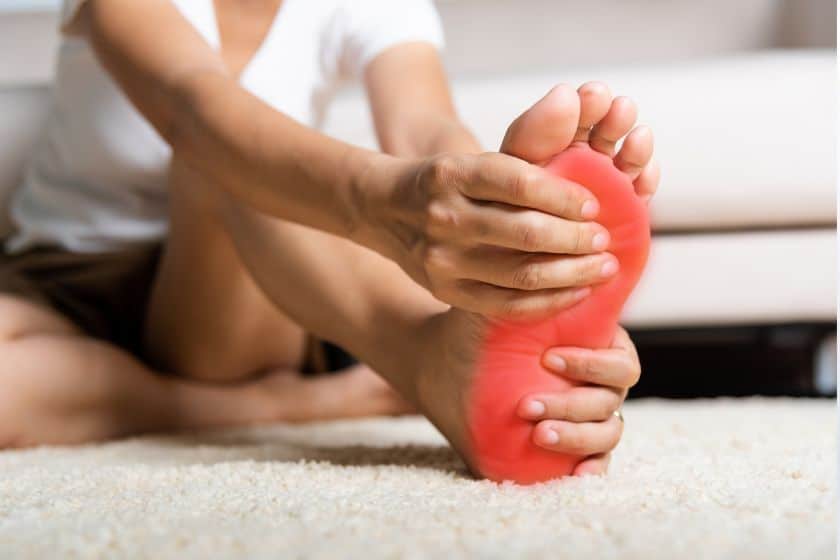When you start to lose feeling in your feet or notice a tingling that just won’t go away, it can be unsettling. Many people living with neuropathy describe it as walking on sand, pins and needles, or even feeling like their feet are wrapped in invisible layers of cotton. What begins as mild discomfort can slowly affect balance, confidence, and independence.
Daily tasks like walking across a room, standing in the kitchen, or getting up in the middle of the night can feel uncertain. And that loss of trust in your body—something once so natural—can take a heavy emotional toll.
But here’s the good news: movement, guided the right way, can help restore function, improve confidence, and rebuild your connection to your body. That’s where physical therapy comes in.
Physical therapy offers a safe, natural, and evidence-based approach to managing neuropathy. Through personalized exercises, gentle strengthening, balance work, and guided movement, therapists help the nervous system adapt, reawaken, and improve communication between the brain and the body. The result? Greater stability, comfort, and independence—without relying on pills or invasive procedures.
Understanding Neuropathy
Neuropathy, often referred to as peripheral neuropathy, involves disruption or irritation in the nerves outside the brain and spinal cord. These nerves carry messages that control sensation, movement, and balance. When they’re affected, you may experience:
- Numbness or tingling (often in the feet or hands)
- A burning or prickling feeling
- Weakness or loss of coordination
- Sensitivity to touch or temperature
- A feeling of instability when standing or walking
For many people, these symptoms come on gradually. They may notice a small change at first—like difficulty sensing the floor beneath their feet—and over time, it becomes harder to stay balanced or confident while walking.
Neuropathy can have many causes, from long-term health conditions to circulation issues or injuries. But regardless of what triggered it, the focus of physical therapy is always the same: to help the body adapt, move better, and restore as much functional ability as possible.
Why Movement Is Medicine
When sensation or strength changes, the natural response is often to do less. Many people rest more or move cautiously because they fear falling or worsening the problem. But this lack of movement can actually make things worse. Muscles weaken, joints stiffen, and balance declines—creating a cycle that leads to more limitations.
Physical therapy breaks that cycle. It uses carefully guided movement to help retrain the brain and body to work together again.
Through consistent, intentional practice, nerves and muscles begin to communicate more effectively. This process, known as neuroplasticity, allows the body to find new ways to move safely—even when some nerves are compromised.
Every small improvement—a steadier step, a better sense of the ground beneath your feet, a more confident turn—signals progress and reminds you that change is possible.
How Physical Therapy Helps People with Neuropathy
Physical therapy focuses on helping people function better in everyday life. It’s not about quick fixes—it’s about long-term improvement through gradual, meaningful progress. Here’s how it works:
1. Balance and Stability Training
Many people with neuropathy lose their sense of balance because their feet no longer give accurate feedback to the brain. Therapists use exercises that challenge balance safely—often starting with support and progressing as confidence grows.
This may include standing on one leg, shifting weight side-to-side, or walking along a marked line. These simple yet powerful activities help retrain your balance systems and reduce the risk of falls.
2. Strengthening Key Muscles
When nerve communication weakens, muscles often follow. Physical therapy targets areas most affected by neuropathy—such as the ankles, calves, hips, and core—to restore strength and control.
Building these muscle groups creates a stable foundation, making walking and standing easier and less tiring. The goal isn’t to push harder, but to move with more control and endurance.
3. Gait (Walking) Retraining
Walking with neuropathy can feel uncertain, as if each step could shift unexpectedly. Therapists analyze your walking pattern, identifying where movement can be smoother or safer.
They then use corrective cues, exercises, and sometimes balance aids to improve your stride, reduce fatigue, and enhance your sense of security with every step.
4. Sensory Re-education
Some physical therapists incorporate gentle techniques that stimulate sensation in the feet or hands. This may include light massage, textured surfaces, or proprioceptive training.
These activities help the brain recognize different types of input, which can gradually improve how you perceive touch, pressure, and movement—often leading to improved confidence when walking or standing.
5. Functional Independence
Physical therapy always ties back to what matters most—your ability to live freely and do what you love. That might mean climbing stairs without hesitation, walking outdoors, or standing long enough to cook dinner comfortably.
Each session builds toward your personal goals, helping you reconnect movement with purpose.
The Emotional Journey: From Frustration to Freedom
Living with neuropathy isn’t just a physical experience—it’s emotional, too. Many people describe feeling isolated, discouraged, or fearful that their independence will fade away. It’s easy to lose hope when discomfort or unsteadiness becomes part of daily life.
Physical therapy helps restore more than movement—it restores belief. When you begin to notice progress, even small wins, your mindset changes.
Moments that once felt impossible—like walking without a cane or feeling the texture of the ground again—become powerful reminders that your body is still capable of adapting and improving.
That emotional renewal often becomes the true turning point: when you stop seeing neuropathy as a permanent limitation and start seeing it as a challenge you can work through, one step at a time.
Personalized Care for Every Individual
No two people experience neuropathy the same way. That’s why physical therapy is always tailored to the individual. After a thorough evaluation, your therapist creates a personalized plan designed around your unique symptoms, goals, and daily challenges.
Your plan may include:
- A customized home exercise program
- Hands-on therapy for flexibility and mobility
- Balance and strength sessions in the clinic
- Education on safe footwear, posture, and daily habits
- Regular progress reviews and goal adjustments
This approach ensures that every session moves you closer to what matters most—confidence, comfort, and freedom in everyday life.
Why Early Action Matters
One of the most important factors in managing neuropathy successfully is acting early. The sooner you begin a movement-based program, the better your chances of maintaining strength, sensation, and coordination.
Waiting too long can make nerves and muscles less responsive, leading to greater weakness and instability. Physical therapy provides a structured way to stay proactive—helping you protect your mobility before limitations take hold.
Even if you’ve been living with neuropathy for years, it’s never too late to start. The human body has a remarkable ability to adapt and improve with the right guidance and consistent effort.
The Power of Progress
Progress in physical therapy often comes in small, meaningful steps. You might notice:
- More confidence when walking on uneven surfaces
- Less fatigue after standing or walking
- A stronger sense of balance and stability
- Easier transitions from sitting to standing
- Improved awareness of where your feet are in space
Each change builds momentum, showing you that movement really can be medicine. Over time, these improvements often add up to something far greater—restored independence and a renewed sense of hope.
Preventing Falls and Injuries
One of the biggest concerns for people with neuropathy is the risk of falling. Because sensation in the feet can be reduced, it’s harder to detect shifts in balance or uneven surfaces.
Physical therapists address this directly. They teach strategies for:
- Navigating stairs or curbs safely
- Choosing supportive footwear
- Making the home environment safer (lighting, handrails, floor mats)
- Building reflexes to recover quickly if you do lose balance
These tools help you move through life with greater security and assurance—knowing that you can trust your body to respond when you need it most.
Living Beyond the Diagnosis
While neuropathy may be part of your life, it doesn’t have to define it. Many people who commit to regular physical therapy rediscover activities they thought were lost forever—gardening, walking outdoors, or playing with grandchildren.
That’s the real power of therapy—it doesn’t just treat a condition; it helps you live again.
Instead of focusing on what you’ve lost, therapy shifts the focus to what you can gain: strength, balance, confidence, and peace of mind.
A Natural Path Forward
Physical therapy offers a non-invasive, medication-free way to improve quality of life for those living with neuropathy. It’s a partnership between you and your therapist—one built on trust, movement, and progress.
By focusing on what your body can do, rather than what it can’t, you begin to rebuild the foundation for a stronger, steadier future.
You may not be able to change the past, but with the right guidance, you can absolutely shape the way forward.
Reclaim the Joy of Movement
If neuropathy has been limiting your life, you’re not alone—and help is closer than you think. A skilled physical therapist can guide you toward greater mobility, strength, and confidence through a personalized, movement-based plan.
Every step, no matter how small, is progress. With time, effort, and the right support, you can rediscover what it feels like to move freely again—to walk with confidence, stand with strength, and live without fear.
Don’t wait for the perfect moment. Start today, and take the first step toward a steadier, more active life—one where neuropathy doesn’t define what you can do, but reminds you how resilient your body truly is.
Ready to take the first step?
Reach out to your local physical therapy clinic today to learn more about how movement can help you feel stronger, steadier, and more in control of your life again.
📞 Call us today at (970) 259-0574 or click below to book your Free Discovery Visit:
👉 Book Your Free Discovery Visit
Other Free Resources:
Check out our massage page on our website!
Follow Tomsic PT on social media – Facebook, Instagram, and LinkedIn


